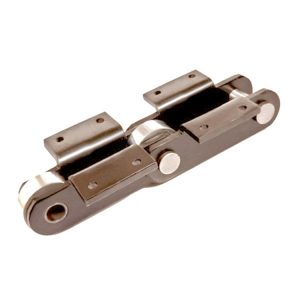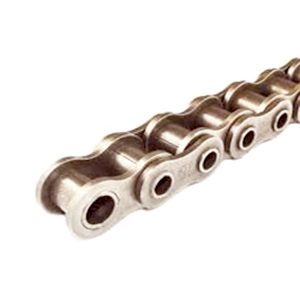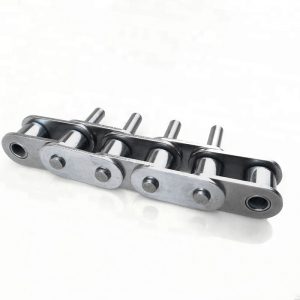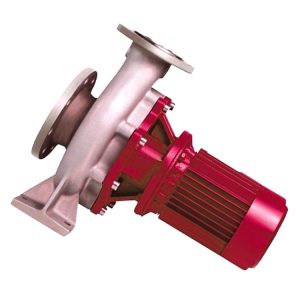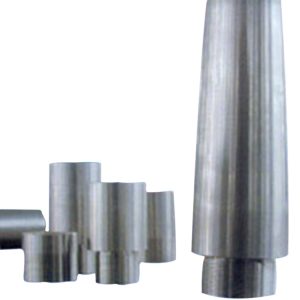Product Description
Roller Aluminum 6061 Die Casting Machinery Pulley
Introduction for machinery pulley:
Xihu (West Lake) Dis. CHINAMFG CHINAMFG Precision Machining Co.,ltd, which is a manufacturer specializing in the machining parts with rich manufacturing and design experience.
Our products include: gringing parts, machining parts, turning parts, lathe parts, milling parts, CNC milling parts, CNC machining parts, CNC turning parts, CNC lathe parts, CNC metal parts, stamping parts, casting and forging parts, assembly service, laser cutting parts, flange and fitting, die casting parts, metal stamping parts, gear and transmission, aluminum profile, automation group, punch parts, and all kinds of custom/customize parts.
Welcome to send us your drawing for CNC parts machining service, we can customize as your requirement.
Some photos for machinery pulley:
Technical parameter of machinery pulley:
| 1.Material | Aluminum, Brass, Bronze, Copper, Hardened Metals |
| 2.Tolerance | +/-0.05mm |
| 3.Finishing | anodizing,polishing,plating ,blacken ect |
| 4.Edges and holes | debarred |
| 5.Surfaces | free of scratches |
| 6.Material capabilities | aluminum, stainless steel, copper, plastic and more |
| 7.Various materials and finishing ways are available | |
| 8.Non-standard aluminum product | |
| 9.Material and finishing comply with RoHS Directive | |
| 10.Small orders are welcome | |
Technical Details of machinery pulley:
| Technical Process | CNC machining, EDM W/C |
| Dimension | Client’s artwork is available |
| Capability | Milling:Length,machining range up to 1100*600 mm |
| Turning: Diameter 0.05mm~300mm ; Length 0.5mm ~ 750mm | |
| Wire Cutting: machining range can up to 450*400*300mm | |
| Precision | Turning and Milling:+/- 0.002mm(+/-0.000098 inch) |
| Wire Cutting: +/- 0.002 mm (+/-0.000098 inch) |
Equipment List for machinery pulley:
| Equipment List | ||||
| Name | Quantity (set) |
Origin | Precision | Running Distance |
| CNC gantry machine | 1 | China | 0.005mm | 2000*1300mm |
| CNC machining Centers | 1 | China | 0.005mm | 600*500mm |
| CNC horizontal machine center | 4 | China | 0.005mm | 800*500mm |
| CNC machining Centers | 9 | China | 0.005mm | 600*500mm |
| CNC lathe/mill machine center | 4 | China | 0.005mm | 50*150mm |
| Lathe Machine | 2 | China | 0.01mm | 200*750mm |
| Milling Machine | 10 | China | 0.01mm | 300*700mm |
| grinding machine | 3 | ZheJiang | 0.003mm | 150*400mm |
| High Speed W/C | 4 | China | 0.015mm | 250*300*400mm |
| Slow Feeding W/C | 1 | China | ||
| Sand Blast Machine | 1 | China | ||
| Polishing Machine | 1 | China | ||
QA inspection Equipments for machinery pulley:
| Measuring Equipment | ||||
| Name | Qty(set) | Origin | Precision | W.T |
| Height Gauge | 2 | Swiss | 0.001mm | |
| Microscopy | 1 | China | 0.005mm | |
| Rockwell Hardness Tester | 1 | China | 0.01mm | |
| projector | 1 | Japan | 0.003mm | |
| Aluminum alloy spectrometer | 1 | Germany | ||
| Pull test Machine | 1 | China | 5T | |
Why Choose us:
1. Fully Machining Services:
Gringing parts , Machining parts, CNC milling and turning parts , CNC milling parts, CNC
metal parts, grinding parts, stamping parts, casting and forging parts, assembly service.
2.Various Machining Materials:
Metal parts, stainless steel parts, alloy steel parts ,brass parts, bronze parts, copper
parts, aluminum parts, plastic parts, ect.
3.Various Finishes:
Anodizing, Electroplating, Polishing, Powder Coating, Blacken, Hardening, Painting and
many other treatment of the parts.
4.Quality Assurance :
IPQC inspect each precision grinding parts during every processing step; 100% inspection before shipment by micrometer, height gauge, projector measuring machine, coordinate
measuring machine(CMM), ect. Any disqualification will be responsible by us.
5.Advantage:
1>.Non-standard/standard/OEM/ODM/customized service provided
2> No MOQ, no quantity limited
3 >Fast lead time
4> Can meet DIN,JIS,ASTM,AISI,BS,GB standard
Payment and shipping:
After Service:
Welcome consult with us, we service:
1. Best Solution for your production.
2. Fast delivery for your urgent order.
Contact information:
/* January 22, 2571 19:08:37 */!function(){function s(e,r){var a,o={};try{e&&e.split(“,”).forEach(function(e,t){e&&(a=e.match(/(.*?):(.*)$/))&&1
| Condition: | New |
|---|---|
| Certification: | ISO9001 |
| Standard: | GB |
| Customized: | Customized |
| Material: | Aluminum |
| Application: | Metal Recycling Machine, Metal Casting Machinery |
| Samples: |
US$ 80/Piece
1 Piece(Min.Order) | |
|---|
| Customization: |
Available
| Customized Request |
|---|
How do pulleys contribute to the operation of conveyor systems?
Pulleys play a critical role in the operation of conveyor systems by facilitating the movement of materials or products along the conveyor belt. Here’s how pulleys contribute to the functioning of conveyor systems:
1. Power Transmission: Conveyor systems typically utilize a motorized pulley, also known as a drive pulley or head pulley, which is connected to an electric motor. The motor rotates the drive pulley, which in turn moves the conveyor belt. The rotational power from the motor is transmitted to the belt through the drive pulley, enabling the continuous movement of the belt and the materials being conveyed.
2. Belt Tension and Tracking: Pulleys are used to maintain proper tension in the conveyor belt. Tension pulleys, also called idler pulleys, are strategically placed along the conveyor system to apply tension to the belt. These pulleys help to keep the belt taut and prevent slippage or sagging. Additionally, tracking pulleys are used to align the conveyor belt, ensuring it stays centered and runs smoothly along the intended path.
3. Load Support: Pulleys provide support for the conveyor belt and the load it carries. The belt wraps around the pulleys, and the load is distributed over the surface of the belt. Pulleys with larger diameters are often used at points where heavy loads are encountered to help distribute the load more effectively and prevent belt deformation or damage.
4. Directional Changes: Conveyor systems may require changes in direction to accommodate the layout or specific processing needs. Pulleys known as bend pulleys or snub pulleys are used to redirect the belt and change its course. These pulleys are designed to guide the belt smoothly around bends or corners without causing excessive stress or strain on the belt.
5. Speed Control: Pulleys can be utilized for speed control in conveyor systems. By using pulleys of different sizes or by employing variable speed drives, the rotational speed of the drive pulley can be adjusted, affecting the speed at which the conveyor belt moves. This allows for flexibility in the conveyance process, accommodating different material flow rates or specific operational requirements.
6. System Support and Stability: Pulleys, along with their associated support structures, provide stability to the conveyor system. They help to maintain the alignment and tension of the belt, preventing misalignment, vibrations, and excessive belt movement. Properly designed and maintained pulleys contribute to the overall reliability and smooth operation of the conveyor system.
Conveyor systems are widely used in industries such as manufacturing, mining, logistics, and warehousing. Pulleys are essential components that ensure the efficient and reliable movement of materials and products along the conveyor belt, enabling automated and continuous material handling processes.
How do pulleys work in garage door openers and winches?
Pulleys play a crucial role in both garage door openers and winches, enabling the smooth and efficient operation of these devices. They provide mechanical advantage, facilitate load lifting and lowering, and contribute to the overall functionality and safety of garage door openers and winches. Here’s how pulleys work in each of these applications:
1. Garage Door Openers:
In a typical garage door opener system, pulleys are used in conjunction with a motor, drive belt or chain, and a set of cables or torsion springs. The pulleys are mounted on the garage door’s torsion bar or header, and the cables or springs are connected to the bottom of the door. Here’s how the pulleys work in a garage door opener:
– Motor and Drive Mechanism: The motor drives a pulley or sprocket, which is connected to a drive belt or chain. As the motor rotates the pulley, the drive belt or chain moves, transferring rotational motion to another pulley or sprocket mounted on the torsion bar.
– Torsion Bar and Cables: The torsion bar, equipped with a pulley, is located above the garage door. The cables are threaded through the pulleys and attached to the bottom of the door on each side. When the motor rotates the torsion bar pulley, the cables move, causing the garage door to open or close.
– Mechanical Advantage: By using pulleys, the garage door opener system creates a mechanical advantage. The arrangement of the pulleys and cables or springs helps distribute the load, making it easier for the motor to lift the heavy garage door. This mechanical advantage reduces the strain on the motor and ensures smooth and controlled movement of the door.
2. Winches:
Pulleys are also integral components of winches used for lifting and pulling heavy loads. Winches consist of a drum or spool around which a cable or rope is wrapped, and pulleys are used to guide and redirect the cable or rope. Here’s how pulleys work in a winch:
– Load Lifting: The cable or rope is wound around the winch drum, and one end is attached to the load to be lifted or pulled. The other end is connected to a fixed point or a secondary pulley system. As the winch drum rotates, the cable or rope is wound or unwound, allowing the load to be lifted or lowered.
– Pulley Systems: Pulleys are used in winches to redirect the cable or rope, providing a mechanical advantage and ensuring smooth movement. Additional pulleys may be employed to create a block and tackle system, further increasing the mechanical advantage and the winch’s lifting capacity.
– Control and Safety: Winches often incorporate braking systems and clutches to control the movement and secure the load. Pulleys play a role in these control mechanisms, helping to regulate the winch’s speed and provide reliable stopping and holding power.
Overall, pulleys are essential components in garage door openers and winches, enabling the smooth and controlled movement of heavy loads. They provide mechanical advantage, facilitate load lifting and lowering, and contribute to the efficiency and safety of these devices.
How do pulleys contribute to load distribution and lifting?
Pulleys play a crucial role in load distribution and lifting by providing mechanical advantage and distributing the load over multiple segments of rope or belt. Here’s how pulleys contribute to load distribution and lifting:
1. Mechanical Advantage: Pulleys provide mechanical advantage, which allows for the multiplication of the force applied to the rope or belt. When a force is applied to one end of the rope or belt, it creates tension that causes the pulley to rotate. As the pulley turns, the force is transmitted to the load attached to the other end of the rope or belt. By distributing the load over multiple pulleys, the force required to lift the load is reduced, making it easier to lift heavier objects.
2. Load Sharing: Pulleys enable load sharing among multiple segments of the rope or belt. In systems with multiple pulleys, such as block and tackle arrangements, the load is distributed over several segments of rope or belt. Each segment carries a fraction of the load, reducing the strain on each individual segment. Load sharing ensures that the load is evenly distributed, minimizing the risk of overload or failure in any single segment.
3. Directional Change: Pulleys allow for directional change in the force applied to the load. By redirecting the force along a different path, pulleys enable lifting and moving loads in various directions, including vertically, horizontally, or at an angle. This directional change is particularly useful in situations where the force needs to be applied from a different position or angle than the original force application.
4. Balance and Stability: Pulleys contribute to load distribution and lifting by providing balance and stability. The use of multiple pulleys in a system helps to distribute the load evenly, preventing excessive stress on any single point. This balanced distribution of the load enhances stability and reduces the risk of tipping or imbalance during lifting operations.
5. Control and Precision: Pulleys provide control and precision in load distribution and lifting. By adjusting the tension in the rope or belt, operators can achieve precise positioning and movement of the load. This level of control allows for accurate placement of heavy objects and ensures smooth and controlled lifting operations.
6. Increased Lifting Capacity: By leveraging mechanical advantage and load distribution, pulleys increase the lifting capacity. The mechanical advantage gained through the use of pulleys allows for the lifting of heavier loads with less effort. The load is distributed over multiple segments of rope or belt, reducing the force required to lift the load and enabling the lifting of objects that would otherwise be too heavy to lift manually.
Overall, pulleys contribute to load distribution and lifting by providing mechanical advantage, load sharing, directional change, balance and stability, control and precision, and increased lifting capacity. These contributions make pulleys an essential component in various lifting and load handling applications.
editor by CX
2024-04-02











